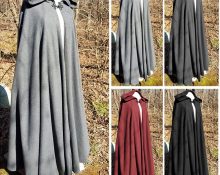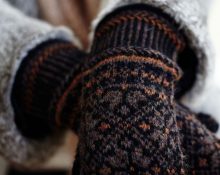
creativecommons.org
Art therapy can consist not only in the popular coloring of ready-made images and patterns. For a creative person, it is much more interesting to improvise, come up with a drawing yourself and color it, relying on your own taste. In this material we will tell you that not only drawing, but also embroidery can perform the function of relieving stress. At the end of the article you will find a master class telling how to easily and quickly repeat doodling and zentangle embroidery without professional equipment.
What is doodling?
Doodling and Zentangle have a lot in common, but after reading our material, you can easily distinguish one from the other. Probably everyone has caught themselves while thinking or having a telephone conversation, drawing strange patterns intertwined with each other. Actually, this is doodling, translated from English as “doodles”. Psychologists and coaches attribute many positive qualities to doodling: it increases attention and concentration, develops creative vision and helps develop innovative thinking.At the same time, doodling is an excellent stress reliever, usually referred to as doodling, including those rhythmic and relatively simple drawings that many draw with their hands during a long conversation. Usually, by the presence of sharp corners in such doodlings, it is easy to understand how sensitive the topic under discussion was for the addressee.
What is Zentangle?
Zentangle, unlike the aforementioned doodling, which rather resembles improvisation and visual stream of consciousness, has its own rules. They are quite simple and will not be difficult to remember. Zentangle fans are those who find it difficult to improvise. Essentially, a zentangle is a repeating pattern that requires full concentration on the design to reproduce. It is enough to look at the progress of work and the step-by-step construction of a single complex drawing in the photo to understand that while doing such work it will be difficult to simultaneously discuss purchases with a friend on the phone or talk with a colleague about work issues. In this case, the drawing does not have to be symmetrical; on the contrary, the author has the right to show imagination and trust the pencil. Many people compare Zentangle to meditation, in which it is important to clear your thoughts and focus on the process. In this regard, zentangle is better suited for embroidery, since the rules simplify the embroidery algorithm, and a complex pattern allows you to embroider a simple and original pattern.
Where do doodling and zentangle come from?

creativecommons.org
Zentangle and doodling are two relatively young trends, as is art therapy itself in general.If doodling is considered rather a folk phenomenon, then zentangle has “parents” - American researchers Rick Roberts and Maria Thomas, who registered a patent for a trademark with the unusual name zentangle in 2006. Zentangle, like any decent official technique that has a patent, even has its own website zentangle.com.
What you will need to reproduce the doodling and zentangle pattern:
- Dark threads. Typically, craftsmen use black threads and white fabric for embroidery to emphasize the contrast.
- White linen or any other light-colored fabric.
- Dark or gray marker for transferring the design onto the fabric.
- Hoop of the required size (depending on the intended volume of the product).
- Needles are regular or special for embroidery.
The principle of doodling and zentangle ornament stitches
The stitches should run strictly parallel to each other so that the work is clearer and more graphic. To enhance the effect, you can use dark threads of different shades from coal black to muted graphite colors. This color transition will additionally create the illusion of volume and depth.


 0
0





